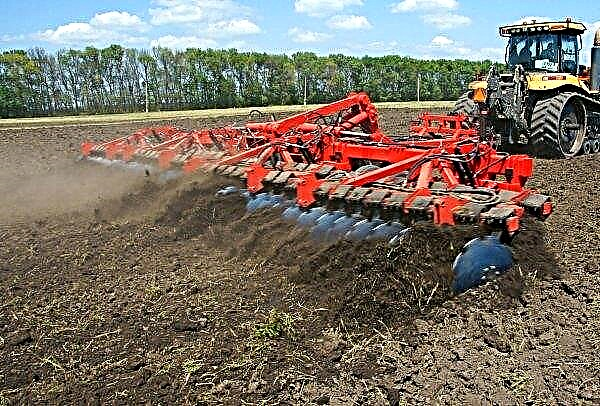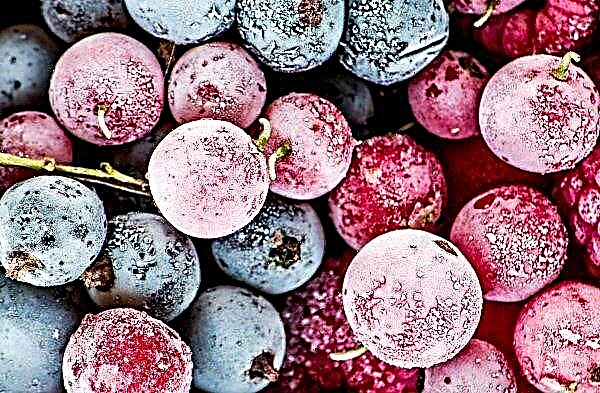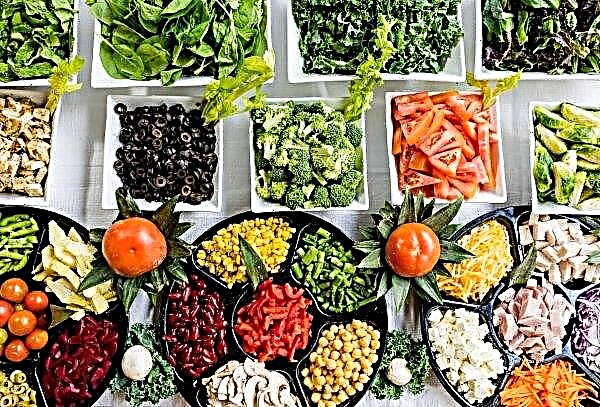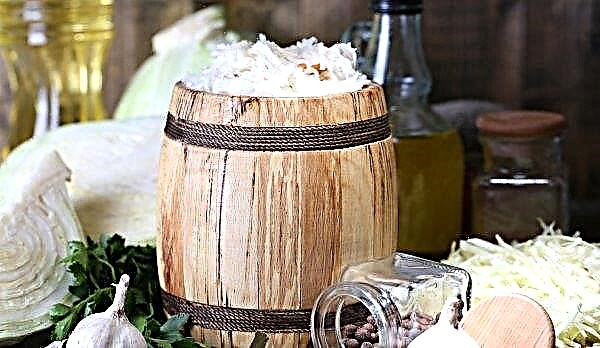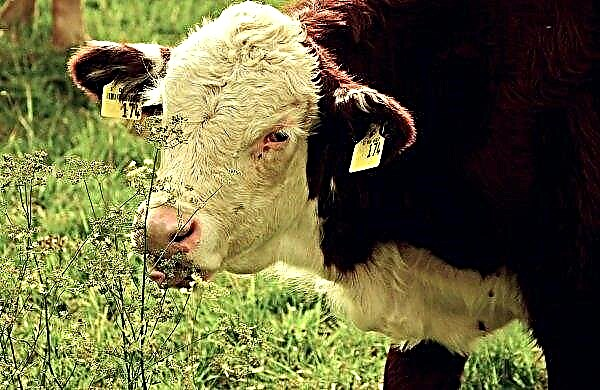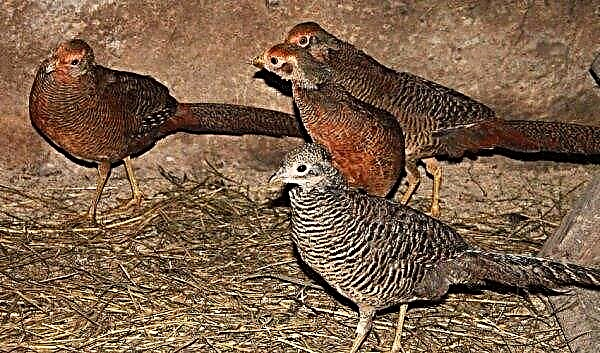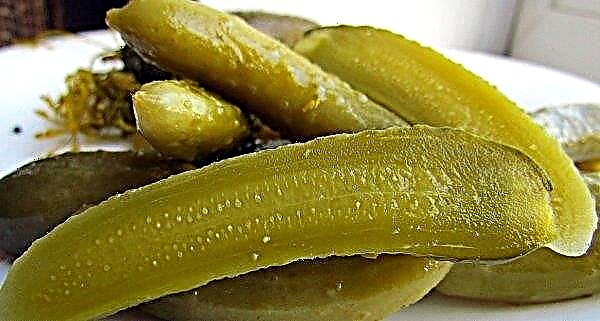Variety Zhuravinka was developed by Belarusians more than a dozen years ago. Breeders managed to create a culture that is resistant to the most common ailments and has an excellent taste. In addition, the variety turned out to be very prolific. It is these qualities that attract the consumer in Zhuravinka potatoes. What else is interesting in it and how to plant this variety correctly - further in the article.
Description and characteristics of the variety
Zhuravinki bush of medium height - 45–55 cm, with erect, sometimes slightly deflected shoots to the side. The foliage is dense, rounded, rich green. The edges of the leaf are wavy and have pronounced veins. The bush blooms beautifully - with purple or violet-red flowers. Berries are extremely rare. Shoots appear evenly and intensely enter into growth.
Advantages and disadvantages
- The positive qualities of the variety are:
- disease resistance;
- frost resistance (up to -7 ° С) and heat resistance (up to + 38 ° С);
- unpretentiousness;
- high yield due to fertility (up to 20 pcs. tubers under the bush);
- great taste;
- universality.
- The disadvantages are:
- poor response to drought (tubers are small, few)
- due to waterlogging, it is affected by late blight.
Did you know? In 2010, 18.6 million hectares were planted with potatoes in the world.
Taste qualities
The taste is great. The pulp does not change color, withstands heat treatment, which allows the use of potatoes for cooking chips, french fries, pancakes and other popular dishes.
Photo gallery
Ripening period and productivity
The variety belongs to medium-late - 75-100 days for ripening. But it happens that he spets 10-20 days later. Due to the fact that there are a lot of tubers under the bush, 400-600 centners of potatoes can be harvested from one hectare of a bed. With proper care and favorable climatic conditions, the yield reaches 700 kg / ha. Commercial quality of the crop is above 80%, and its keeping quality is 93–96%.
Features of planting potatoes
The landing process of Zhuravinka is quite simple. The only nuances are the right choice of a place for planting and thorough preparation of seed.
Crop rotation rules
It is not recommended to plant potatoes in the soil where tomatoes, peppers, and eggplants grew. Three years must pass after them, so that the soil can recover and accept potatoes. Potatoes after potatoes are not planted on the garden for four years.
Did you know? In the world, the average potato crop is 17.4 t / ha.
Landing time
When choosing a landing date, you need to consider the climate of the region. The soil must be warm. The farther south the area, the earlier you can land. So, in the north earlier than mid-May, it makes no sense to carry out planting, and in the south you can start them already in April.
Soil requirements
Culture will give birth well in loose, light soil. The bed should be located on a hill, as moisture accumulates in the lowlands, which the plant really does not like. But the presence of groundwater, but not close, is acceptable. Also, the bed should be located in a sunny place.
Read more about the features of growing other varieties of potatoes:
Soil preparation is carried out in autumn. The bed is dug up with the preliminary introduction of manure (bucket), superphosphate (1 tbsp.), Ash (1 tbsp.) Per square meter. It is advisable to dig on a bayonet and select the entire weed and pests. In the spring they also dig up a bayonet.
Preparing planting material
Planting material is carefully selected. Tight, even, whole tubers weighing 30–100 g are selected. For 3-4 weeks they are taken out into a bright, warm room so that they sprout. In the first weeks, the temperature should be maintained at + 16 ... + 18 ° С, at the end it should gradually drop to + 4 ... + 6 ° С. This will harden the tubers and accelerate their ripening. Still need to conduct processing "Prestige" or "Commander" to protect against the Colorado potato beetle and other pests.
Step-by-step instructions for planting and hilling
Since the bushes form a lot of tubers, you need to plant a crop, given the distance between them:
- The soil is loosened with a pitchfork, leveled with a rake, fertilizer is applied.
- Dig holes of 20 cm depth with a distance of 30 cm between them.
- Between the rows of holes should be left at 0.6-0.7 m.
- In the pits spread on the tuber sprouts up.
- From above they are covered with ash, humus and soil.
The first hilling is carried out after the appearance of sprouts. The number of subsequent hills depends on the climate of the region. In cold areas, you need to spud 5-7 times per season, and in the south you can one to two times.Important! If the soil is loamy, the depth of the hole is up to 7 cm, sandy - up to 10 cm. Regardless of the type, the soil should be moist before planting.

Features of growing and caring for potatoes after planting
The plant is fed three times per season:
- before buds (1 tbsp. Urea per 10 liters of water);
- during bud formation (1 tbsp. Ash, 1 tbsp. Superphosphate per 10 liters of water);
- during flowering (1 tbsp. Superphosphate per 10 liters of water).
Zhuravinka emerges amicably, and the sprouts are gaining strength rapidly, so you need to water them abundantly, until the flowering begins. But moisture should not stagnate in the soil, as this can provoke the process of decay, slow down the growth and formation of tubers. Watering is best done by the drip method in the morning, before sunrise. During prolonged rains, you should reduce the frequency of watering, constantly fluff up the soil and weed weeds. To avoid phytophthora attack, in rainy weather the bushes should be treated with Fundazol.
During prolonged rains, you should reduce the frequency of watering, constantly fluff up the soil and weed weeds. To avoid phytophthora attack, in rainy weather the bushes should be treated with Fundazol.
Important! If Zhuravinka experiences drought, then its foliage falls. It is not advisable to bring to such a state, since the growth of tubers can slow down.
Disease resistance
The variety was developed resistant to diseases:
- blackleg;
- nematode;
- crayfish.
 A dangerous enemy of potatoes is the Colorado potato beetle. You need to fight it manually or with the help of insecticides.
A dangerous enemy of potatoes is the Colorado potato beetle. You need to fight it manually or with the help of insecticides.Harvest dates and basic rules for storing crops
Harvest is ready for harvesting when the tops are completely dry. In Zhuravinka, this happens in late August. Tubers are selected manually or mechanically. The harvested crop is dried and then laid out in bags or boxes and sent to the cellar. During drying, you can immediately sort the tubers by selecting suitable ones for planting. Vegetables can be stored until spring.
Zhuravinka may well compete with other popular varieties of potatoes, although it belongs to the latest varieties. It has a delicious taste of pulp, suitable for preparing many dishes, unpretentious when grown and with good keeping quality.

